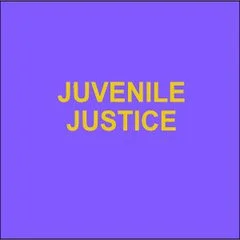By Emily Mooney and Jesse Kelley
Each year, hundreds of thousands of youth are referred to the justice system and placed on probation, which makes probation the most common sanction for young people. Yet despite its prevalence as a response to youth misbehavior, in its current form, probation is often an ineffective long-term intervention. For example, approximately 63 percent of Texas youth adjudicated delinquent and sentenced to probation in 2013 were rearrested within three years and 28 percent were re-adjudicated or convicted of a new offense within that same period. Similarly, in one study of Nebraska’s youth probation system, in the period between 2010 and 2015, one in four youth who successfully completed probation was adjudicated for a new offense within the following year. These trends are explained, in part, by the juvenile justice system’s failure to completely embrace the principles of adolescent development. Developmental research suggests that it is normal for young adults to make poor decisions during this period in life. Experimentation and risk-taking are often symptoms of a struggle to regulate one’s own emotions, anticipate the consequences of future actions or an attempt to impress one’s peers. In most cases, research also shows that adolescents will grow out of these habits on their own as they age. Thus, in many cases, youth currently placed on probation may do just as well or benefit more from local community-based interventions, such as diversion, or from dismissal from the justice system altogether. In contrast, formal justice interventions, such as probation or incarceration, may actually serve to increase the likelihood of future crime. For example, a 2013 report by the National Research Council notes: “[U] nduly harsh interventions and negative interactions between youth and justice system officials can undermine respect for the law and legal authority and reinforce a deviant identity and social disaffection.” In other cases, youth are appropriately served by youth probation but nonsensical probation practices, such as long lists of conditions or the use of incarceration as a response to technical violations, set them up for failure. Given the fact that youth are constantly developing, probation plans and services should be individualized and dynamic rather than stagnant. Further, incarcerating youth for actions that pose no substantial threat to public safety is a waste of time and resources, and jeopardizes the likelihood of future success. There have been some positive developments. Over the last decade, the total number of youth on probation has substantially declined. In 2008, approximately 540,000 youth cases led to the sanction of probation. By 2016, that number had decreased to approximately 282,000. And, in states like Virginia, the average daily youth probation population has decreased by more than half. While these trends, along with the decreasing number of youth behind bars overall, suggest positive movement away from “lock ‘em up” policies of old, there is more work to be done if we are to better serve our youth and their communities. Accordingly, the time has come for a new vision for youth probation. To achieve such a vision, states and localities must return to the core aims of juvenile justice involvement: namely, improved public safety and youth rehabilitation. They must also reassess the current paradigm regarding what probation looks like and whom it should serve. Accordingly, the present study provides an overview of the current state of youth probation and articulates a new paradigm, wherein localities limit government intervention, promote the role of families and—by better reflecting the principles found in developmental research—improve public safety; and finally, it presents a practical guide for how jurisdictions can improve their youth probation systems today.
R STREET POLICY STUDY NO. 168 April 2019
Washington, DC: R Street, 2019. 9p.





















